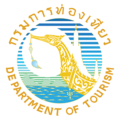30 Years of Paddling: How Andaman Sea Kayak Pioneered Eco-Tourism in Thailand

In 1991, when mass tourism was discovering Thailand’s coastlines, Andaman Sea Kayak launched with a revolutionary idea: explore nature quietly, respectfully, and sustainably. Three decades later, their “Preserve Nature for All” philosophy has transformed both Phang Nga Bay tourism and Thailand’s adventure travel industry.
This is the story of how a commitment to small groups, environmental protection, and cultural respect pioneered a new model for responsible tourism in Southeast Asia.

The Beginning: 1991 – A Different Vision
Founding Principles
When Andaman Sea Kayak started, Thailand’s tourism focused on beaches and entertainment. The founders saw Phang Nga Bay’s pristine karsts and hidden lagoons as an opportunity for something different:
- Small groups only: Maximum 8-10 guests per guide
- Zero environmental impact: Leave no trace, disturb no wildlife
- Cultural partnerships: Work with local Sea Gypsy communities
- Authentic exploration: Access hidden places unreachable by speedboats
- Educational focus: Help visitors understand and protect what they experience
Early Challenges
Starting eco-tourism in 1991 Thailand meant overcoming significant obstacles:
- No established sea kayaking industry
- Limited safety equipment available
- Market skepticism about “educational” adventures
- Building trust with traditional fishing communities
- Competing against mass tourism operators
The first tours were true pioneering expeditions with basic equipment and routes discovered through months of personal exploration.
The 1990s: Building Foundations
Local Partnerships
Andaman Sea Kayak’s crucial early decision was building genuine partnerships with Sea Gypsy communities rather than simply operating in their waters.
Partnership Development:
- Hiring local fishermen as guides and boat operators
- Learning traditional navigation and weather reading skills
- Ensuring tourism revenue flowed directly to local families
- Respecting cultural boundaries and sacred sites
By the mid-1990s, Sea Gypsy families had become integral to operations, bringing traditional knowledge that enhanced both safety and authenticity.
Environmental Leadership
As one of the first operators in Phang Nga Bay’s sensitive environments, they developed strict environmental protocols:
- Pack-in, pack-out waste policies
- Wildlife disturbance monitoring
- Cave protection procedures
- Biodegradable products only
- Quiet paddling emphasis
These standards often exceeded regulations by years, establishing industry benchmarks.
The 2000s: Recognition and Growth
International Awards
By 2000, Andaman Sea Kayak gained global recognition:
- National Geographic: Featured as model responsible tourism operator
- Travel + Leisure: Listed among Asia’s best eco-tourism companies
- UNESCO: Consulted on marine protected area management
The James Bond Island Challenge
Mass tourism’s arrival at James Bond Island tested their principles. Their response:
- Developed alternative routes to hidden locations
- Optimized timing to avoid crowds
- Shared secret spots known only to experienced guides
- Advocated for sustainable tourism policies
Rather than compete with mass tourism, they deepened their commitment to authentic, small-group experiences.

The 2010s: Industry Leadership
Climate Change Response
As climate impacts became apparent, Andaman Sea Kayak intensified conservation efforts:
- Carbon offset programs for all tours
- Coral reef health monitoring
- Sea level change documentation
- Guest education about marine ecosystem protection
Community Development
Three decades of partnerships led to formal development projects:
- Supporting traditional Sea Gypsy boat-building
- Funding education scholarships for community children
- Recording traditional stories and cultural knowledge
- Promoting sustainable fishing methods
Key Innovations That Changed Tourism
The Small Group Model
Maximum 8-10 guests per guide created:
- Minimal environmental impact
- Personalized experiences
- Better safety ratios
- Deeper educational opportunities
- Respectful cultural interactions
This model influenced adventure tourism throughout Southeast Asia.
Comprehensive Guide Training
Their training program became an industry standard:
- Natural history and marine biology education
- Sea Gypsy culture and traditions
- Advanced safety and rescue certification
- Environmental ethics and conservation
- Cross-cultural communication skills
Community-Based Tourism
Working with local communities as partners, not obstacles:
- Direct employment for local families
- Cultural preservation support
- Traditional knowledge sharing
- Economic benefits distribution
- Community participation in tourism planning
Environmental and Cultural Legacy
Conservation Impact
Thirty years of low-impact tourism contributed to:
- Marine habitat protection through economic value demonstration
- Species monitoring data for scientific research
- Zero-waste tourism practice modeling
- Thousands of visitors educated about conservation
- Policy advocacy for environmental protection
Cultural Preservation
Partnerships with Sea Gypsy communities helped preserve:
- Traditional maritime knowledge and skills
- Oral histories and legends
- Traditional boat-building techniques
- Cultural ceremonies and practices
- Intergenerational knowledge transfer
Challenges and Adaptations
Balancing Growth with Principles
Success brought the challenge of managing demand while maintaining standards:
- Keeping group sizes small despite increased demand
- Training new guides to quality standards
- Upgrading facilities sustainably
- Attracting environmentally conscious travelers
Regulatory Evolution
Adapting to Thailand’s changing tourism regulations while exceeding requirements and advocating for stronger environmental protections.

The Next Decade: Future Opportunities
Emerging Focus Areas
- Scientific tourism: Citizen science partnerships with researchers
- Digital detox: Technology-free nature immersion experiences
- Wellness integration: Combining adventure with mindfulness
- Climate adaptation: Developing tourism strategies for environmental change
- Cultural exchange: Deepening cross-cultural understanding programs
Conclusion: Proving Principles Work
Thirty years of operation proves that tourism can protect environments, preserve cultures, and support communities while providing extraordinary experiences. Andaman Sea Kayak’s journey from startup to industry leader demonstrates that staying true to founding principles creates lasting value for everyone.
Their legacy extends beyond successful business to:
- Preserving one of Thailand’s most spectacular marine landscapes
- Supporting sustainable livelihoods for Sea Gypsy communities
- Inspiring responsible tourism practices industry-wide
- Educating thousands about marine conservation
- Proving that profit and principles can align
As they enter their fourth decade, the 1991 vision remains relevant: preserve nature for all through respectful, educational, and authentic experiences. The next thirty years offer new opportunities to continue pioneering sustainable tourism that protects the extraordinary places and cultures that make our world worth exploring.







